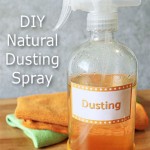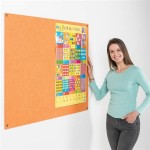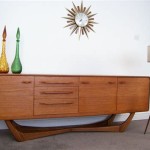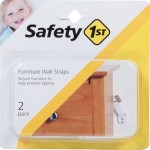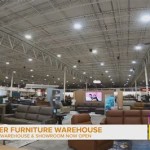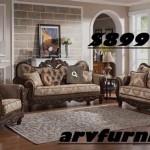Do It Yourself Cat Litter Box Furniture: Combining Functionality and Style
Cat ownership frequently involves managing the less appealing aspects of pet care, most notably the litter box. While essential for hygiene, a standard litter box can be an eyesore, disrupting the aesthetic of a well-maintained home. DIY cat litter box furniture provides a stylish and functional solution, concealing the litter box while potentially offering additional storage or seating. This approach allows cat owners to integrate the litter box seamlessly into their decor, addressing both practical needs and visual preferences. The following provides information on how to construct the pieces of furniture and the benefits.
Key Point 1: Planning and Design Considerations
Before embarking on the construction of DIY cat litter box furniture, meticulous planning is crucial. Several factors must be considered to ensure the final product is both aesthetically pleasing and functional for the cat and its owner. First, proper dimensions should be determined. The size of the litter box itself dictates the minimum internal dimensions of the furniture. Sufficient space should be added to allow the cat to comfortably enter, turn around, and exit without feeling confined. Cramped spaces can deter cats from using the litter box, leading to unwanted accidents. The cat's size is equally important. A large cat will require more space than a kitten. The entrance should be appropriately sized to accommodate the cat's physique without posing a hindrance.
Ventilation is an often-overlooked but critical aspect. Enclosing a litter box without adequate airflow creates an environment conducive to odor buildup and potential bacterial growth. Design should incorporate vents or openings to promote air circulation. These vents can be strategically placed on the sides or back of the furniture and can be disguised with decorative grilles or covered with fabric mesh to maintain the overall aesthetic. Material selection is also of significant importance. Wood is a common choice due to its versatility, durability, and ability to be painted or stained to match existing furniture. However, wood can be susceptible to moisture damage from spills or accidents. Treating the interior surfaces with a water-resistant sealant is advisable. Alternatively, materials like melamine or plastic sheeting can be used for the interior lining to provide a completely waterproof barrier. The exterior should be made of safe materials for your pet.
Design aesthetics are also important. The furniture should blend harmoniously with the existing decor. Consider the style, color scheme, and overall design sensibility of the room where the litter box furniture will be placed. Options range from minimalist designs that prioritize clean lines and functionality to more elaborate pieces that mimic traditional furniture styles. Furthermore, additional features can be incorporated to enhance the functionality of the furniture. Shelves can be added for storing extra litter, scoops, or cleaning supplies. A top surface can be designed to function as a side table or plant stand. The design possibilities are limitless, constrained only by the dimensions of the space and the imagination of the creator.
Key Point 2: Construction Techniques and Material Selection
The construction of DIY cat litter box furniture involves a variety of woodworking or assembly techniques, depending on the chosen design and materials. A basic design may involve constructing a simple box-like structure with an entrance hole and a hinged or removable top for easy access to clean the litter box. More complex designs may incorporate doors, drawers, or interior partitions. The type of joinery used will depend on the materials and the desired level of structural integrity. Common joinery methods include screwing, gluing, and using dowels or biscuits. Screws are generally the easiest to use and provide a strong, secure connection. Glue, when used in conjunction with screws or other fasteners, adds extra strength and stability. Dowels and biscuits create a more refined, professional look by concealing the fasteners.
Cutting wood accurately is essential for a professional-looking finish. A circular saw or jigsaw can be used for cutting larger pieces, while a miter saw is ideal for making precise angle cuts. Sanding the edges and surfaces of the wood is important to remove any splinters or rough spots and to create a smooth surface for painting or staining. The choice of finish will depend on the desired aesthetic and the type of wood used. Paint provides a durable, opaque finish that can be easily matched to existing furniture. Stain enhances the natural grain of the wood and provides a more traditional look. Regardless of the chosen finish, it is important to apply a sealant or topcoat to protect the wood from moisture and scratches. The hardware used, such as hinges, latches, and door pulls, should be chosen to complement the overall design. Consider using soft-close hinges to prevent the door from slamming shut and startling the cat. Magnetic latches can be used to keep the door securely closed while still allowing for easy access.
When selecting materials, consider both cost and durability. Plywood is a cost-effective option for the main structure of the furniture, while solid wood can be used for the trim or accents. Reclaimed wood can be a sustainable and aesthetically pleasing choice, adding character and uniqueness to the project. Hardware cloth or plastic mesh can be used to create ventilation openings while preventing the cat from escaping. Consider adding rubber feet to the bottom of the furniture to protect floors from scratches and prevent the furniture from sliding. These feet can also help to level the furniture on uneven surfaces.
Key Point 3: Safety and Cat-Friendly Considerations
Safety is paramount when constructing any DIY project, especially one intended for pet use. All materials used should be non-toxic and safe for cats. Avoid using paints or finishes that contain lead or other harmful chemicals. Ensure that all edges and corners are smooth and rounded to prevent injuries. The entrance should be large enough for the cat to enter and exit comfortably, but not so large that it poses a tripping hazard. The interior of the furniture should be free of any sharp edges or protruding hardware that could injure the cat. Securely attach any shelves or interior partitions to prevent them from collapsing. The height of the entrance should also be considered, especially for older cats or cats with mobility issues. A low entrance is easier for cats to access, while a higher entrance can help to contain litter.
Cat-friendly design elements should be incorporated to make the furniture more appealing to the cat. Cats prefer privacy when using the litter box; therefore, the furniture should provide a sense of seclusion. A covered litter box or a design with high sides can help to create a more private space. The entrance should be positioned away from high-traffic areas to minimize distractions. Consider lining the interior of the furniture with a soft, comfortable material, such as carpet or fleece. This can make the litter box more inviting and encourage the cat to use it. Some cats prefer a litter box with a low threshold, while others prefer a box with higher sides. Experiment with different designs to determine what your cat prefers.
Regular cleaning and maintenance are essential to keep the litter box furniture clean and hygienic. The interior surfaces should be wiped down regularly with a disinfectant cleaner. The litter box should be scooped daily and the litter should be replaced regularly. Consider using a litter box liner to make cleaning easier. Furthermore, routine checks for any signs of damage or wear and tear should be conducted, addressing any issues promptly to ensure the long-lasting functionality and safety of the furniture. This includes inspecting hinges, latches, and other hardware, as well as checking for any cracks or splinters in the wood. Addressing any issues promptly will prevent them from escalating into more significant problems and ensure the continued safety and well-being of the cat.

Diy Enclosed Cat Litter Box

Diy 101 Make Your Own Super Jumbo Litter Box For Cat Adulting

Diy Litter Box Enclosure Hide Your

Cat Litter Box Cabinet Kreg Tool

Diy Litter Box Ivar Cabinet

Diy Cat Litter Box Furniture Alewood Co

Cat Litter Box Furniture
:strip_icc()/hidden-litter-box-14-c6036309a7fc400b9332fbfd1687e5b9.jpg?strip=all)
17 Clever Diy Litter Box Enclosures

Diy Cat Box Cabinet 4 Steps With S Instructables

Diy Farmhouse Style Cat Litter Box Furniture For The Home
